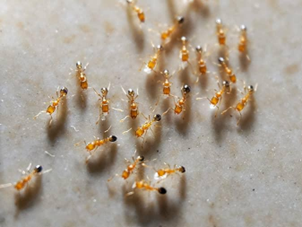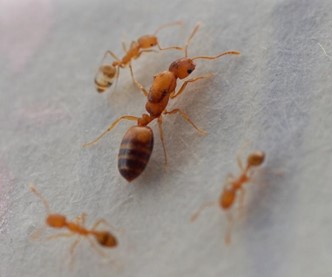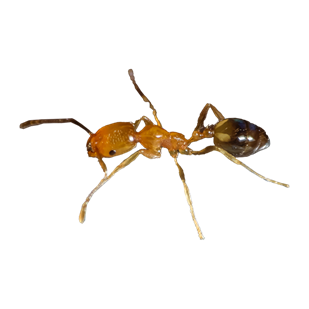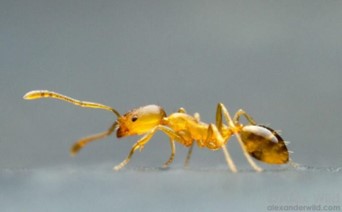Pharaoh Ant
Effective Pharaoh Ant treatment solutions
- We reply within 24 Hours
- Safe, effective treatments
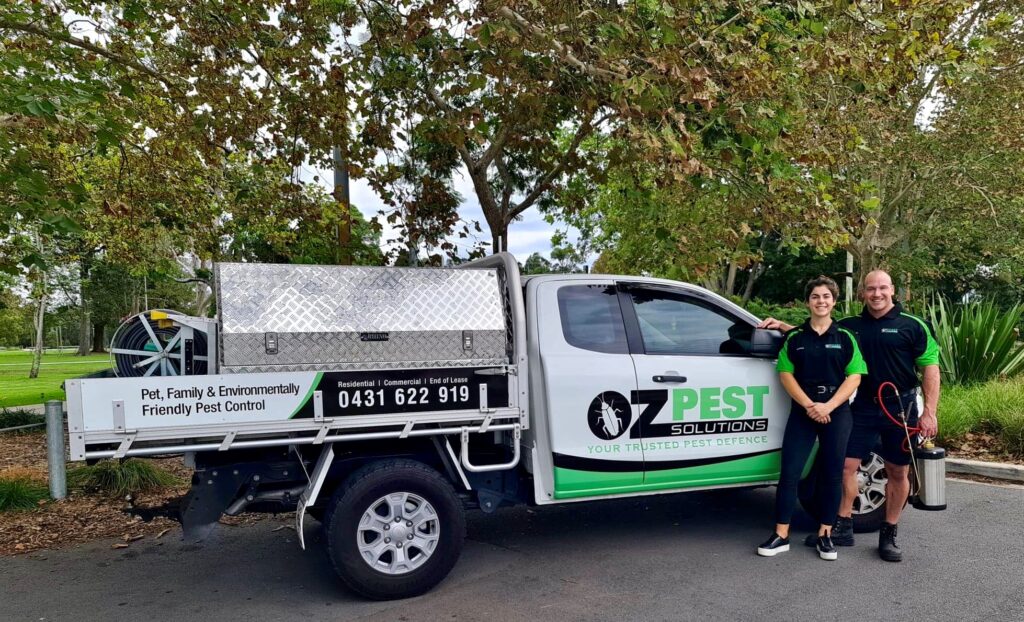
Pharaoh Ant
Effective Pharaoh Ant treatment solutions
- We reply within 24 Hours
- Safe, effective treatments
Pharaoh Ant
Monomorium pharaonis
Characteristics
The Pharaoh ant is commonly found throughout Australia and can be recognised by its yellow-brown body and prominent black eyes. This ant species is relatively small, with worker ants measuring only 1.5mm to 2mm in length. The queen Pharaoh ant is easily distinguishable by her dark red body, evident wings, and length of 3.6mm to 5mm. Meanwhile, the males are slightly bigger than the workers, measuring 3mm in length and having a darker black body colour.
Habitat
Pharaoh ants thrive in warm and humid conditions, and are commonly found in buildings such as wall voids, near windows, or in plants. They can easily spread through service ducts like heating and electrical conduits as they prefer a warm environment. Pharaoh ants are notorious for infesting buildings and hospitals, particularly in temperate regions. They mostly forage for water around sinks and have a diverse diet that includes meat, cheese, fat, sugar, dead insects, and mice. In hospitals, they are known to feed on blood and other bodily fluids.
Lifecycle
Regarding their life cycle, the Pharaoh ant queens lay around 10 to 12 eggs per batch which will hatch within five to seven days. These eggs develop into larvae and undergo a larval period for 18 to 20 days. It takes approximately 38 to 45 days for the Pharaoh ants to reach full maturity. Unlike most ant species, Pharaoh ants have multiple queens within their colony, and each queen can lay hundreds of eggs throughout their lifetime.
What our customers say...
FAQs About Pharaoh Ant
Why are they called pharaoh ants?
What is the nature of the colonies of pharaoh ants?
How do I know if my house is infested with pharaoh ants?


Key Information
Distribution
Typical nest location
Outdoor / Indoor pest
Distinguishing features
/ Important Points
Pharaoh Ants are diurnal creatures, meaning they are only active during the day. They are known to have very persistent trail networks, and they can switch between protein and sugar food sources. They have punctate, or pit-like, features on their head and thorax, which give them a dull appearance.
Colony structure
Diet Preference
Safety Concerns
